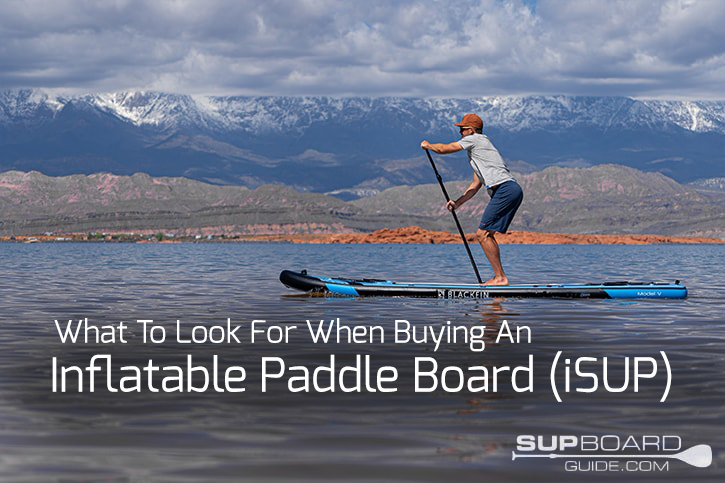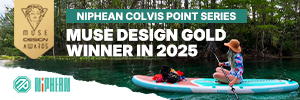
If you’re brand new to inflatable paddle boards, it might seem confusing or even overwhelming to make an informed buying decision. The size of the board, the weight, the type of construction, even the type of paddle are all important determining factors that can impact your enjoyment. If you’d like personal help in selecting the best board for you, we’d encourage you to fill out the form at this link. We’ve been paddling for years, and we’d love to offer our support and knowledge in helping you select your paddleboard.
However, if you’re just trying to get a general idea of what to look for in buying an inflatable SUP, we’d recommend considering the following factors.
What are you going to use your iSUP for:
Most inflatable SUPs are categorized by the type by the activity they’re best suited for. If you want to go racing, buy a racing board; if you’re into yoga, buy a yoga board! Most of these activities are self-explanatory, but you might also be unsure of what you want to do with your inflatable SUP. In that case, we recommend looking at an all-around board. All-around boards might not be the best at any single activity, but they’re pretty close in performance to specialized boards no matter the sport.
If you want to be more precise, here are a few key general characteristics to note:
- The longer the board, the better it will be at tracking and gliding.
- The shorter the board, the better it will be at maneuvering.
- The wider the board, the stabler it will be.
- The thinner the board, the faster it will be.
Thickness is a tricky one. Most boards tend to be either 6’’ or 5’’ thick. Generally, if all other dimensions and features are the same, a 5’’ SUP will be more stable and offer better performance than a 6’’ SUP in normal conditions. The tradeoff is that 5’’ boards offer less weight capacity than a 6’’ counterpart, and will suffer from a larger performance loss when a paddler is close to the board’s weight limit. We would recommend trying to opt for boards with at at least s small excess in weight capacity for the most stable paddling experience. If you’re new to inflatable paddle boards, we would also recommend just trying a couple of boards with different thicknesses before determining which one is better suited for you.
Speaking of weight capacity, the iSUP recommended weight capacity is a good indicator of their total stability. Boards with higher weight capacity tend to be larger and more durable, but also are typically slower and harder to maneuver. Alternatively, lighter and thinner boards will be faster and more nimble, but they won’t be able to support as many riders, and can even struggle with larger, heavier single riders. If you’re a beginner, you’ll generally want to go for a larger board, between the extra stability, the wider deck space, and the additional weight capacity.
What kind of Fin System do you need:
Typically, you’ll have one of three different fin systems with your iSUP. Many entry-level boards offer permanent fins, which tend to offer good performance and be nearly indestructible but are also limited in their performance settings. If you don’t want to ever worry about dealing with your fins, boards with permanent fins will perform admirably.
The happy medium for many riders will be snap-lock fin systems. Some board companies offer easy to remove fins that can be snapped in and locked in seconds. These fin boxes offer some level of customization while making them easy to install and deal with. However, these fin boxes are less common than US fin box systems (see below), and so their overall fin choices tend to be more limited.
Your typical fin box (US fin box, FCS fin box are a few names these go by) can be a little bit of a hassle, with most standard fin boxes featuring a screw and plate system. While installing these fins take a bit more time, they do come in a wider variety, offering the maximum amount of customization and fine-tuning for performance-focused paddlers. Fin manufacturers are also improving their fins, resulting in fins such as the FCS II fins. FCS II fins will lock in and slide even quicker than a snap-lock fin, despite working with a traditional fin box. While we love traditional fin boxes, especially those that work with FCS II fins the most, it’s important to remember that boards with permanent fins will still suit the vast majority of paddlers getting into the sport.
What is the construction of the board:
Inflatable paddle boards are typically made of military-grade PVC layers covering a tight drop-stitch core. Essentially, sheets of fabric are connected by thousands of short strings. The fabric sheets expand away from each other as air is pumped into the core, but as the strings go taught a board shape is maintained, rather than the balloon shape typical of most inflatables. While this drop-stitch core is plenty durable on its own, layers of PVC are applied as an outer shell that offers additional protection, firmness, and weight support.
The most basic paddleboards typically only have one layer of PVC protection. Even with just one layer, it’ll make your paddleboard resistant to most drops, scratches, and other common paddle boarding accidents. However, additional layers offer added performance and durability, with many boards featuring two, three, or sometimes even four layers of PVC protection. However, every layer of protection will also increase the weight of the board and make it slower, though you’ll still find the typical inflatable board lighter to carry than a similarly sized hardboard.
What type of accessory compatibility comes with the iSUP:
Do you have a GoPro camera? Then you’ll want an inflatable SUP that comes with an action mount preinstalled. Do you want a board that can secure a couple of coolers? Look for a paddleboard that has bungee cargo areas. How about just something that’s great for fishing gear? Then a board with Scotty mounts preinstalled is an important addition to have.
A great feature of many inflatable paddle boards is that they come with D-rings, action mounts, Scotty mounts, bungee cords, and other options for accessory compatibility. However, not all paddle boards are built alike, and what is present on one board won’t be present on another. If you have stuff you know you’ll want to bring with you on the water every time you go, look for a board with heavy accessory compatibility.
What kind of Pump does it come with:
Inflatable paddleboards do have to be inflated, and most kits come with either a single or dual-chamber pump. Single chamber pumps tend to be lighter and easier to use, while dual-chamber pumps inflate faster and have multiple inflation options. No matter what you use, you’ll be able to inflate your typical inflatable paddle board in 5 to 10 minutes – although you will get in a pretty good arm workout with a manual pump.
Our number one accessory recommendation for inflatable paddle boards is an electric pump as an alternative to manual pumping. Plug it into a car or travel battery, and you’ll be able to inflate your paddleboard without tiring yourself out. Further, electric pumps will help deflate your board for you, ensuring that it will be nice and snug in your backpack as you pack things up. Some paddleboard backpacks now even have a special slot for iSUP electric pumps, so invest in one if you want to maximize your time on the water.
What kind of Paddle does it come with:
Overall, the best paddle you can get is a full carbon fiber paddle. Carbon fiber is the lightest paddle option, but also the most expensive. Carbon fiber blend paddles are a close second, offering similar performance at a lower price point, and weigh just a little more. Fiberglass paddles are a good third and are even more affordable, though you start to lose some of the stiffness and lightness that are important in a paddle performance. Many entry-level kits will come with an aluminum paddle shaft, which is the least expensive but also the heaviest.
Does a board coming with an aluminum paddle mean you shouldn’t buy it? Not necessarily. While in the long term we would recommend upgrading your paddle, an aluminum paddle will still offer decent performance, especially for entry-level paddlers. If you’re learning how to paddleboard, you’ll find aluminum, carbon, and everything in between great options for SUPing. For those looking to commit long term though, consider investing in at least a full carbon fiber paddle.
Who manufactures the paddleboard:
Almost as important as the board itself is who the manufacturer is. Different manufacturers offer different warranties, return policies, shipping policies, and customer support help. If you manage to puncture or otherwise severely damage your inflatable board, you’ll generally have to rely on the manufacturer to fix your problem. Looking at customer reviews and finding companies with great support teams will help you maintain a good and working board in the long run.
Along with board reviews, we have company reviews of the major inflatable SUP manufacturers on our website. Be sure to check them out along with the board itself before making a purchasing decision.
A few of the companies we love and trust in the inflatable SUP space include: iRocker/BLACKFIN, Thurso Surf, Earth River SUP (ERS), Red Paddle Co., Isle Surf & SUP, NIXY, GILI, Atol, and Bay Sports.
Conclusion:
As we explained before, there is a lot to take in before buying an inflatable SUP. Getting experience before buying is the best thing you can do if you can rent or borrow locally. We’d also recommend looking at our top 2020 SUPboards, any of which we would heartily recommend. However, if you still can’t make a decision, we’re more than happy to answer questions you might have by email or via the comments below.
We hope you’ve found this guide helpful, and we hope to see you on the water soon!
SupBoardGuide Editorial Team
Latest posts by SupBoardGuide Editorial Team (see all)
- Best Inflatable Paddle Boards (iSUPs), 2025 - July 3, 2025
- Best Cheap Inflatable Paddle Boards (2025) - March 26, 2025
- SeaGods Carta Marina CX Review - January 31, 2025





